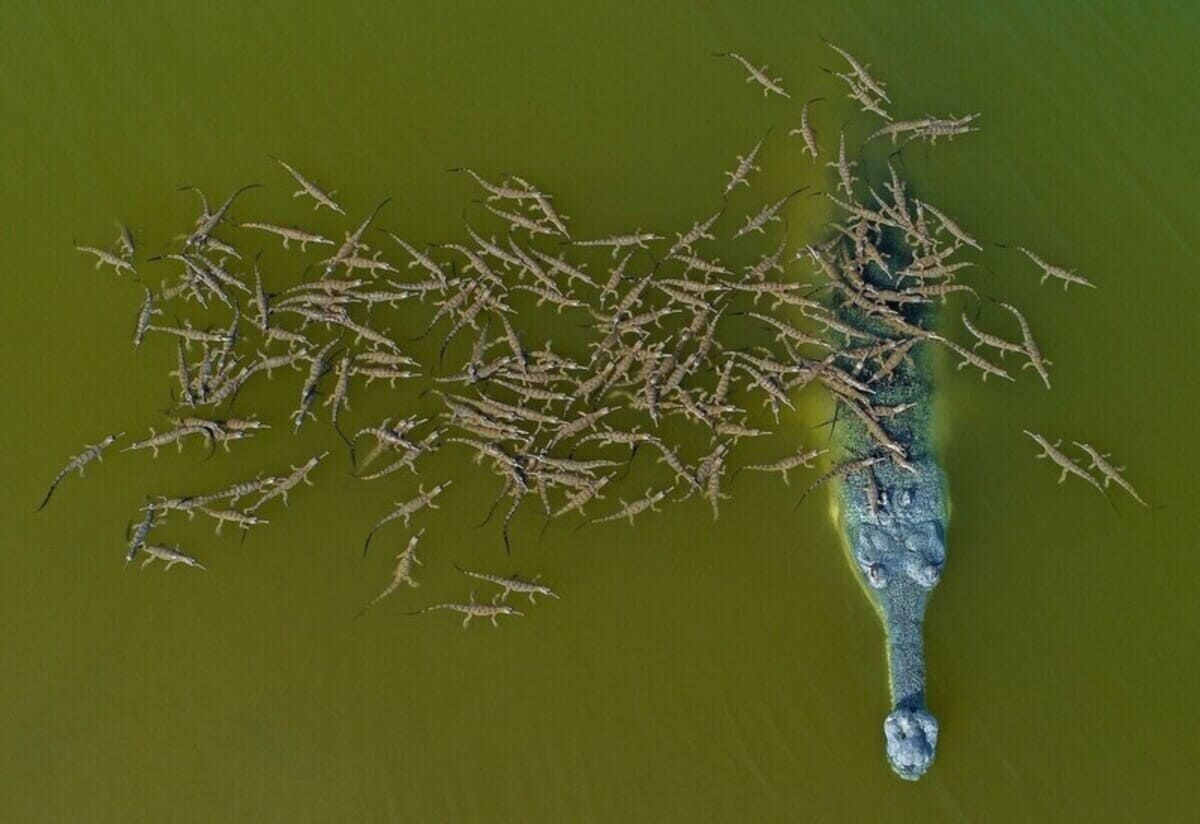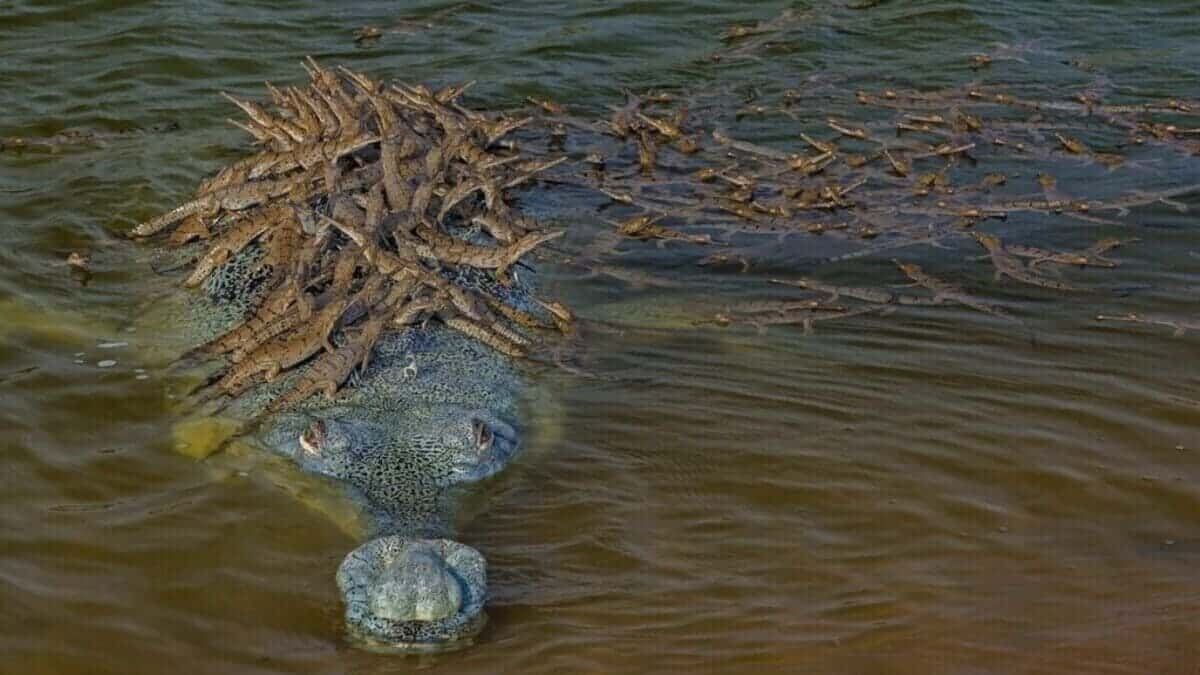Every so often, a wildlife photograph captures more than just a fleeting moment — it tells a story about survival, adaptation, and the delicate balance of nature. One such image, now spreading rapidly online, shows a massive gharial crocodile ferrying around 100 of his tiny offspring on his back as he glides through a sacred river in India. The scene looks almost mythical, yet it’s a rare glimpse into the realities of a species fighting for its existence.
A rare sight in the Ganges River
Photographer Dhritiman Mukherjee spent weeks in a wildlife sanctuary, patiently waiting for the right moment. His perseverance paid off when he captured the striking image of a male gharial carrying what appeared to be an entire nursery of hatchlings.
Unlike most crocodilians, gharials are physically unable to transport their young in their mouths — their long, slender snouts and needle-like teeth make that impossible. Instead, these gentle giants use their broad backs as rafts, allowing their babies to rest safely while they navigate river currents. It’s an ingenious form of parenting, one that not only protects the young from predators but also strengthens their chances of survival in one of the world’s most challenging environments.
A father’s crucial role in survival
The image also shines a spotlight on a species in crisis. Today, only around 650 adult gharials remain in the wild, according to conservationists. Once common across rivers in South Asia, their numbers have plummeted due to habitat loss, pollution, and fishing practices that destroy their fragile ecosystems.
Patrick Campbell, senior reptile curator at London’s Natural History Museum, explains that males, which can grow more than four meters long and weigh nearly 900 kilograms, play an essential role in raising juveniles. In rivers like the Chambal, home to the largest remaining population of around 500 gharials, every successful breeding season is critical. The survival of each juvenile is not just a family matter — it’s a matter of keeping an entire species alive.

Capturing the spirit of the river
Mukherjee’s award-winning photograph does more than showcase natural history; it evokes a deep sense of wonder about parenthood, resilience, and adaptation in the animal kingdom. The photographer kept a respectful distance, using his lens to draw us closer to a species that most people may never see in their lifetimes.
The image has been shortlisted for Wildlife Photographer of the Year and won a major competition hosted by the Natural History Museum, standing out among thousands of entries. More importantly, it has sparked global conversations about conservation and the importance of protecting vulnerable ecosystems.
More than a picture, a reminder
For those who come across the photo online, it’s easy to admire it simply as an extraordinary moment in the wild. But it’s also a reminder of how much is at stake. The gharial’s survival is tied to the health of India’s river systems, and by extension, to the broader health of our planet.
Mukherjee’s work shows us that even in the most threatened corners of nature, life finds a way. The sight of 100 baby crocodiles clinging to their father’s back is more than heartwarming — it’s a testament to the power of adaptation, the strength of family bonds, and the urgency of conservation in a changing world.
You might also like:

David Miller is an entertainment expert with a passion for film, music, and series. With eight years in cultural criticism, he takes you behind the scenes of productions and studios. His energetic style guides you to the next big releases and trending sensations.
